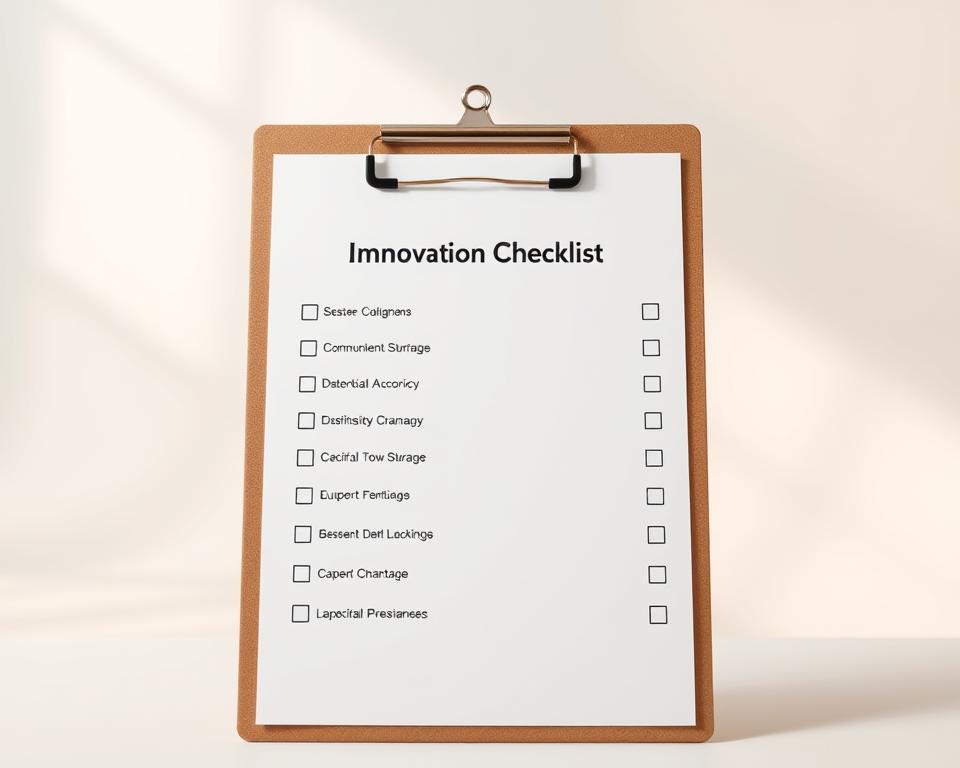Anúncios
innovation — is it the secret sauce for growth, or a buzzword that hides real work?
You see leaders and organizations praise new ideas, yet the numbers tell a different story.
McKinsey found that 84% of CEOs say innovation is critical to growth, but only 6% feel satisfied with their performance. Experts from Strategyzer and GIANT Innovation’s David Dabscheck point to common execution risks, like equating progress with technology or betting big without the right process.
This piece offers evidence-based guidance and clear insights, not promises. You’ll learn practical ways to move beyond theatre and measure real outcomes over time.
Adapt these recommendations to your context and consult qualified professionals for specific business or sustainability decisions. For a deeper look at common beliefs, see the seven core ideas in this short primer: seven innovation myths.
Anúncios
Key Takeaways
- You’ll identify the top myths that block progress and the practical truths that help teams deliver results.
- Learn why the gap between belief and execution persists, even as leaders call this work essential for growth.
- Replace vague aims with clear, evidence-based approaches that cut risk over time.
- Find concise data and case examples to ground each lesson for your organization.
- Get simple tools and processes that teams can use without large budgets or complex tech.
Introduction: Why innovation myths still derail organizations
Across sectors, leaders claim value from innovation but struggle to turn ideas into results. McKinsey found that 84% of CEOs call it vital for growth, yet only 6% feel satisfied. This gap signals execution challenges, not a lack of ambition in companies.
Define the goal simply: make things that are new and useful for your customer. GIANT Innovation’s David Dabscheck warns about the “solution bubble,” where teams chase novelty over real needs. Every team has a customer—internal or external—and that lens helps you pick the right problems to solve.
Take a practical approach: start small, test assumptions, capture learning, and iterate the process. Focus on culture, skills, and lightweight tools more than flashy technology. Later sections will debunk common innovation myths and show models you can adapt so your organization measures progress by validated learning, not activity.
Anúncios
Myth: Innovation equals cutting-edge technology
Too often teams equate shiny tools with progress, and miss simpler paths to customer value.
Strategyzer warns about “technology tunnel vision.” That belief narrows choices to costly, risky bets.
Value to the customer defines success, not novelty. Zara shows this by changing the business model. Fast feedback from stores to designers let the company turn customer signals into product moves quickly.

ICL proves small process tweaks can pay off. A short pipe raised temperature ~1.5 °C and cut costs by about $6M a year. That result came from rethinking processes, not new technologies.
Use the Business Model Canvas to map channels, pricing, and partners. Spot opportunities beyond R&D. Validate needs first with interviews and simple demand tests.
- Run lightweight experiments that test willingness to pay.
- Scale only after evidence accumulates.
- Celebrate useful solutions, not just flashy demos.
“New and useful beats novelty for its own sake.”
Myth: Big bets guarantee big breakthroughs
Placing a single large bet can feel decisive, yet it often concentrates risk and slows learning. You need a disciplined approach that balances protecting the core while funding new growth.

Portfolio discipline
Use a 70/20/10 split across core, adjacent, and transformative investments. This lets your business protect cash flow while probing higher upside.
Evidence-based funding
Start small. Run ~$10,000 experiments to test key assumptions. Move to ~$100,000 pilots only when signals are clear.
Define scaling gates with specific customer evidence: demand tests, usage data, or repeat purchases. Tie more resources to those signals.
Incentives that reward learning
Design incentives to value validated learning, not polished decks. Ask leaders to set decision rights and timelines so projects don’t drift.
“Reward teams for what they learned, not how well they sold a plan.”
- Track learning metrics: assumptions tested and confidence gained.
- Prevent all-or-nothing bets by staging funding and clear gates.
- Adjust the portfolio as evidence and market conditions change.
Myth: Only a few “natural innovators” can innovate
Talent for new ideas often grows with practice, not just as an inborn trait. You can build capability across your organization by creating clear learning paths and hands-on apprenticeships.
Role-specific pathways teach the skills each level needs: customer interviews for product teams, rapid prototyping for engineers, and experiment design for operations. Pair classroom learning with on-the-job apprenticeships so people apply methods to real needs.
Democratizing skills with programs and coaching
ICL’s BIG accelerator is a strong example. The program captured over 7,000 ideas and converted roughly one in three into projects. Leaders credit open access, cross-unit collaboration, and patience for early failures.
- Capture ideas at scale and coach teams in customer discovery.
- Run simple experiments to raise confidence before scaling.
- Use clear conversion criteria so only evidence-based projects move forward.
“Give people the tools and permission to try small things; many will save time or reduce risk.”
Encourage peer-led communities, track participation and skills growth, and reward practical learning. This approach unlocks people’s potential and spreads a practical mindset across business units.
Myth: A rigid process can manufacture breakthroughs on schedule
A fixed, one-size-fits-all process rarely produces breakthroughs on time. Rigid stage gates often lock teams into plans before they learn what customers actually need. That slows progress and raises risk for your business.
Flexible, intentional systems
Use a discovery-driven approach that makes learning the primary output. Define pivot, persevere, or kill criteria up front so teams judge work by evidence, not optimism.
Leadership’s role
Leaders should enable cross-functional teams with clear decision rights and fast feedback loops. Trust squads to run standardized experiment playbooks and track learning metrics.
- Favor short experiments over long approvals.
- Adopt simple tools for visual collaboration and backlog management.
- Build development paths so people gain repeatable skills.
“Treat processes as living systems — update them when evidence or markets change.”
Adapt your approach to fit your organizations and companies. No single framework fits every context; stay ethical, context-aware, and focused on validated outcomes.
Myth: Innovation requires massive new resources and in‑person collaboration
You don’t need a warehouse of new equipment or all-hands office days to move from idea to impact. Smart constraints and clear rules help teams run faster experiments with real customer signals.
Smart constraints: Dedicated budgets, streamlined approvals, and external partnerships
Set a separate, modest budget for early tests and give teams lightweight approval paths. This prevents the corporate resource trap and speeds small projects.
Partner with startups, accelerators, and universities to access tools, technologies, and fresh perspectives without a heavy investment. Use simple spending thresholds tied to evidence so projects scale only when customers show interest.
Hybrid advantage: Visual collaboration, asynchronous work, and diversity-driven results
Hybrid work widens your talent pool across the world and improves diversity, which correlates with stronger results. BCG found diverse organizations earned a larger share of revenue from new products.
Use visual collaboration platforms and async practices to keep cross-functional teams aligned. Run virtual customer co-creation sessions with shared canvases and testing tools to capture feedback fast.
- Separate innovation budgets with lightweight approvals to speed experiments.
- Formalize partnership programs to broaden tools and options.
- Use async work and visual platforms to sustain momentum across time zones.
- Tie project spending thresholds to clear customer evidence.
- Align collaboration norms with your culture so teams capture potential responsibly.
“Constraints often create the clearest opportunities — they force focus and reveal efficient solutions.”
Conclusion
Practical change starts when teams trade assumptions for clear, testable evidence.
Busting innovation myths helps you refocus on customer value, disciplined progress, and measurable results. Start small, document insights, and scale what works for your company over time.
Adapt models and processes to fit your organization’s constraints. Review resources, decision rights, and diversity practices so teams unlock more potential. Use staged funding, simple pilots, and clear criteria to reduce risk without large upfront spend.
Blend programs, tools, and skills development to build durable capability. And when planning larger investments or sustainability work, consult qualified professionals to align goals and governance.
Consistent learning and thoughtful portfolio choices compound into meaningful growth.



